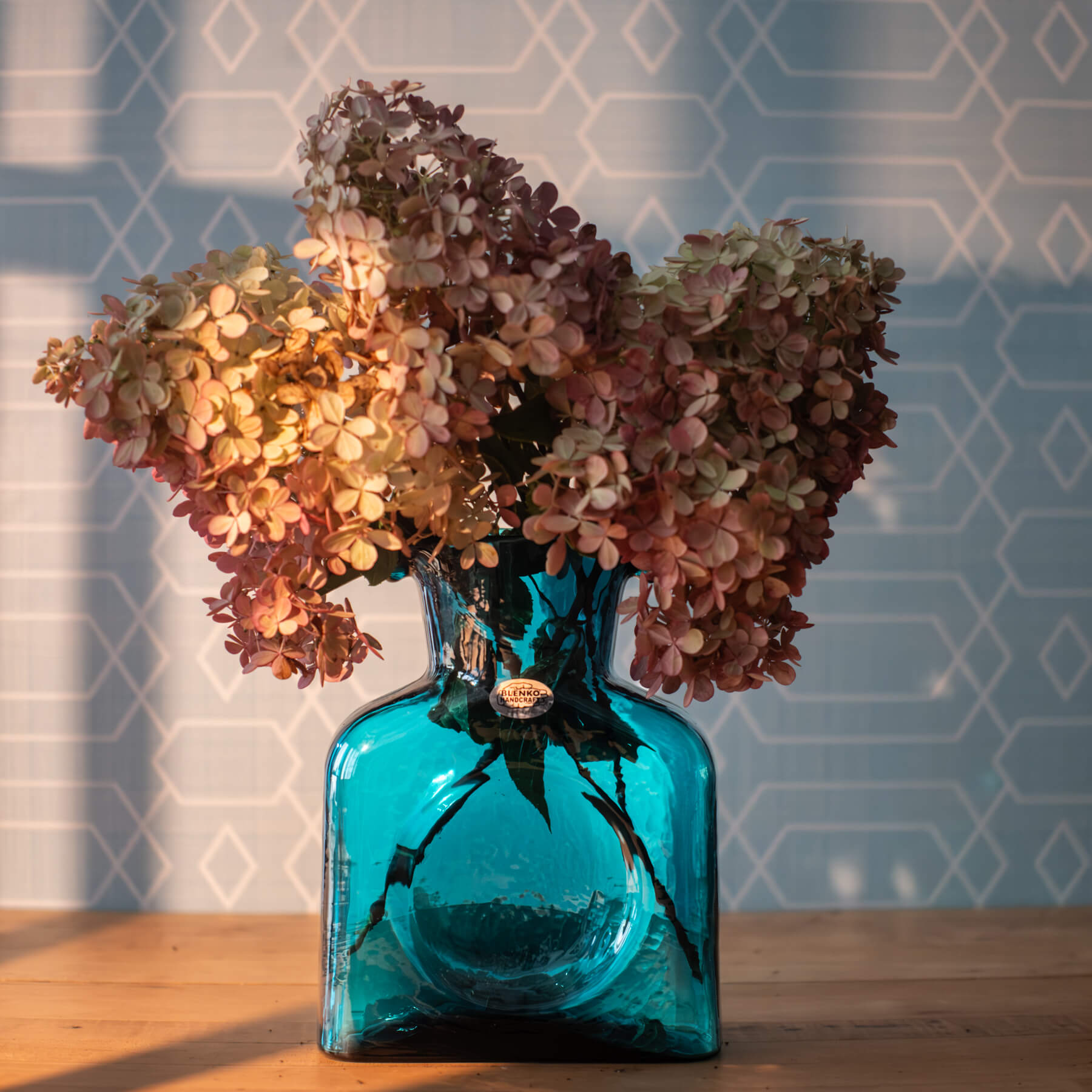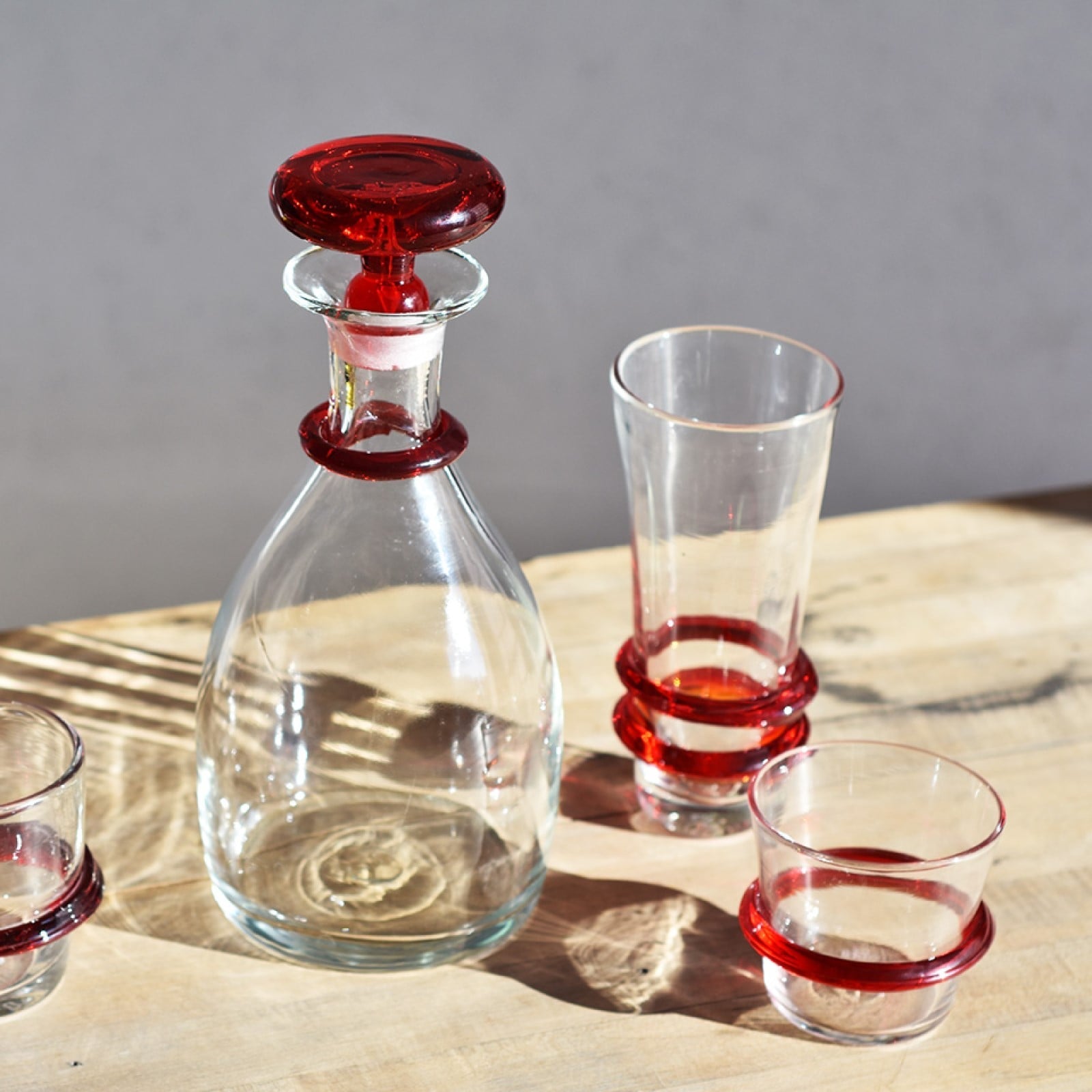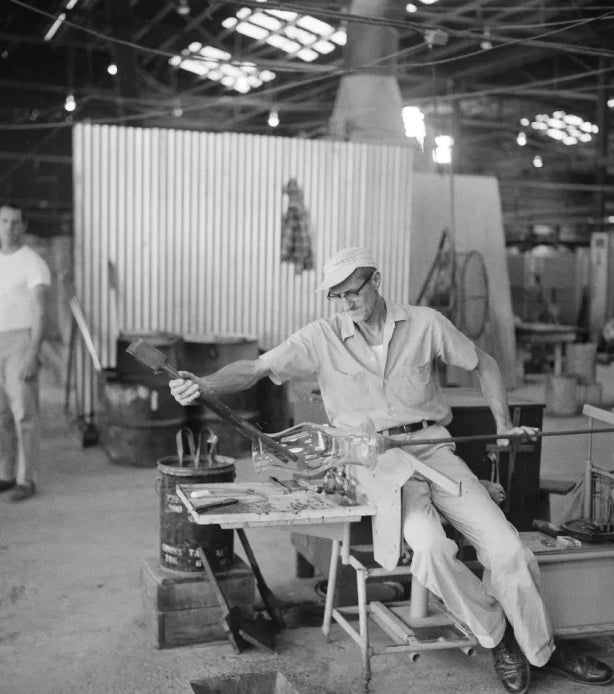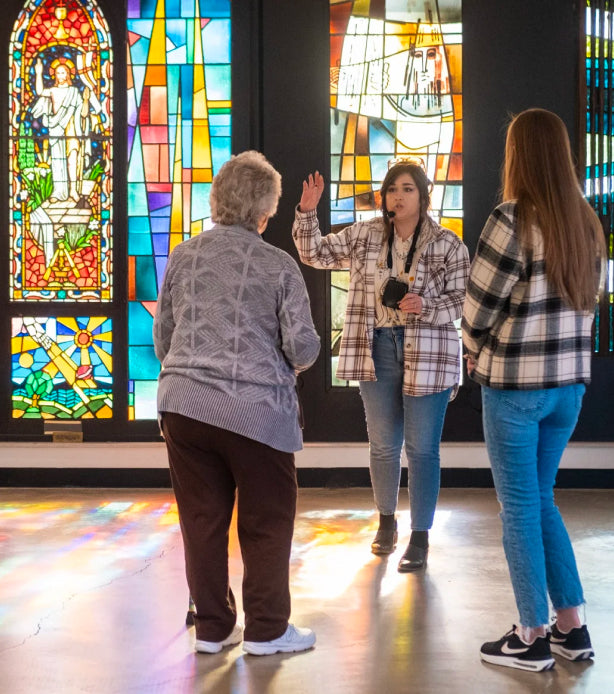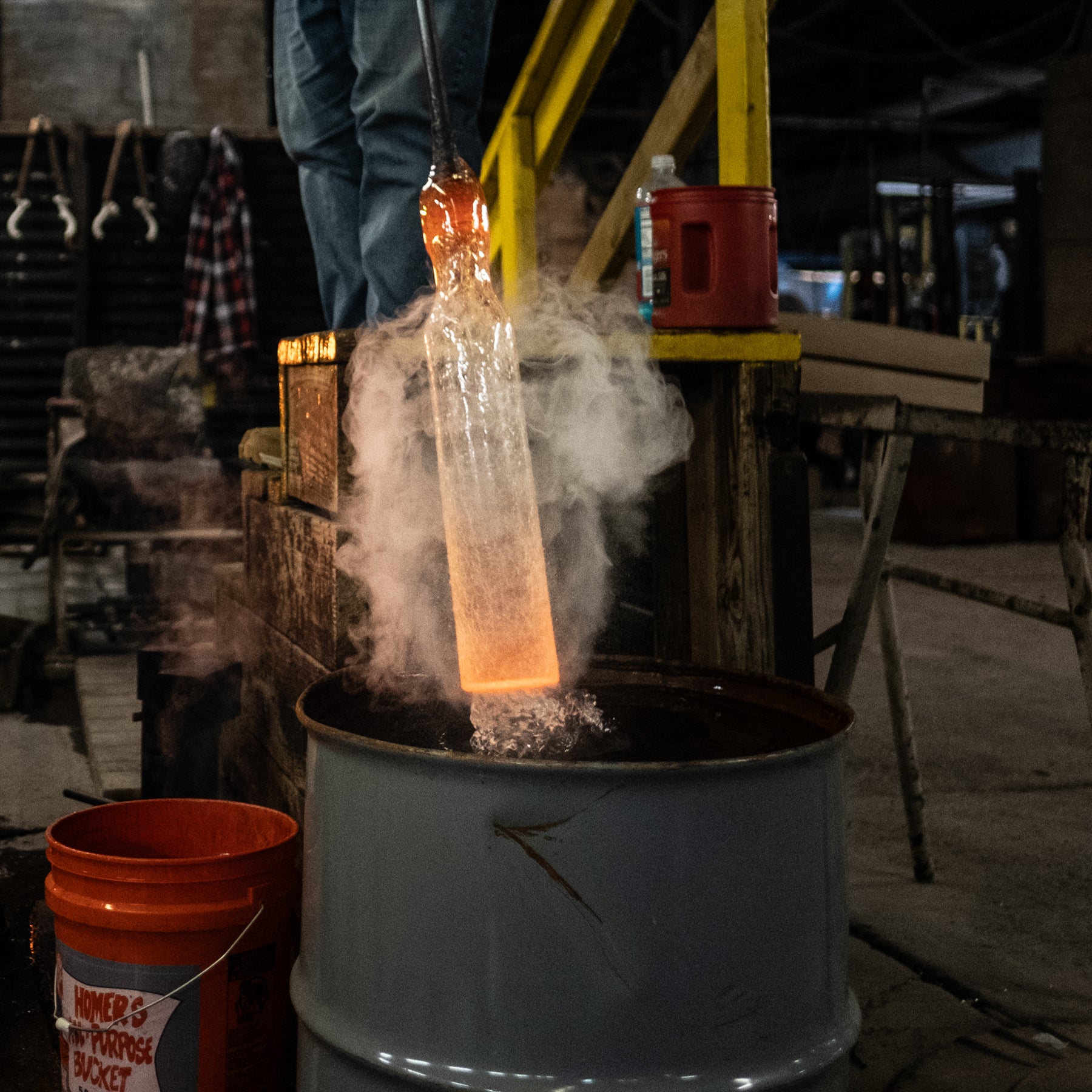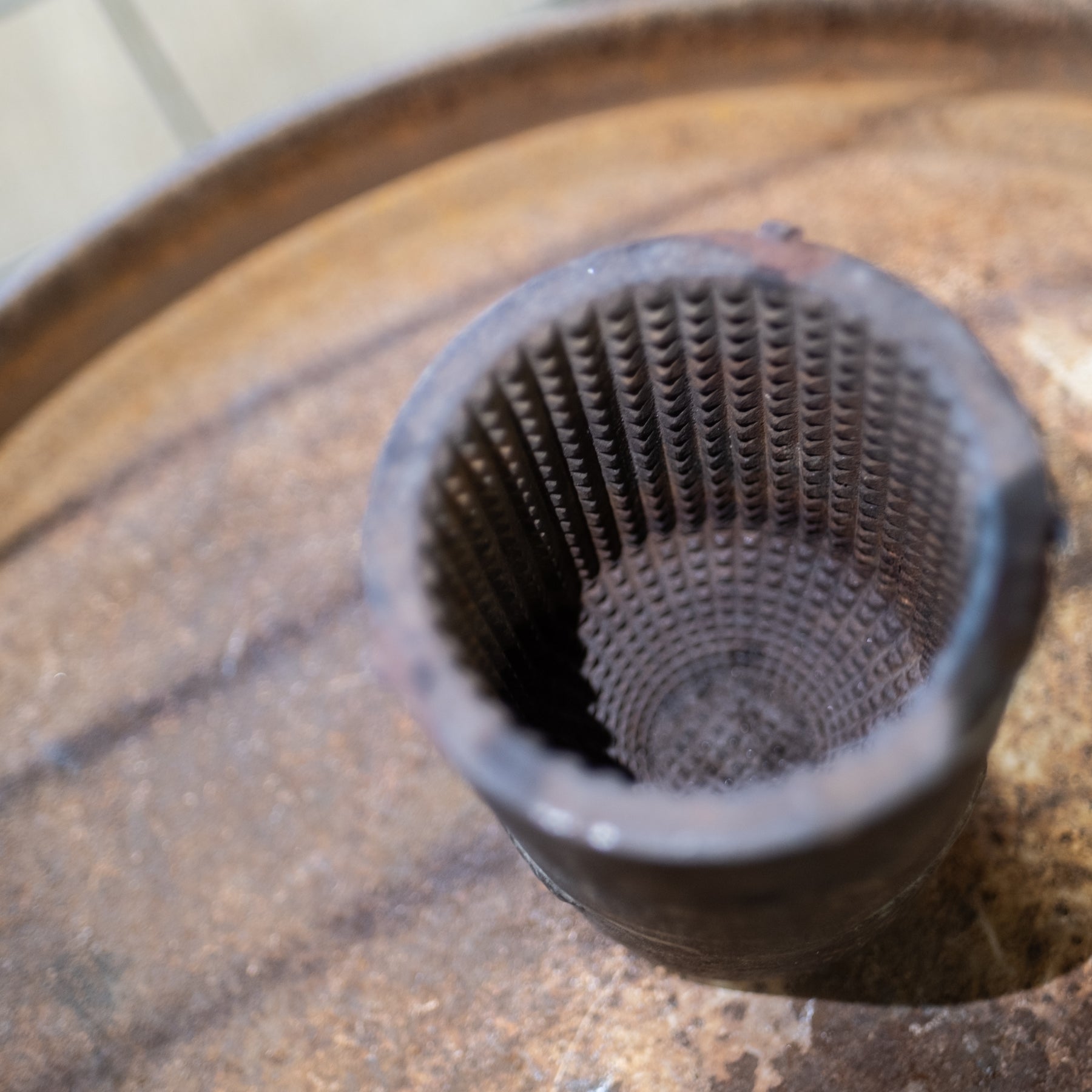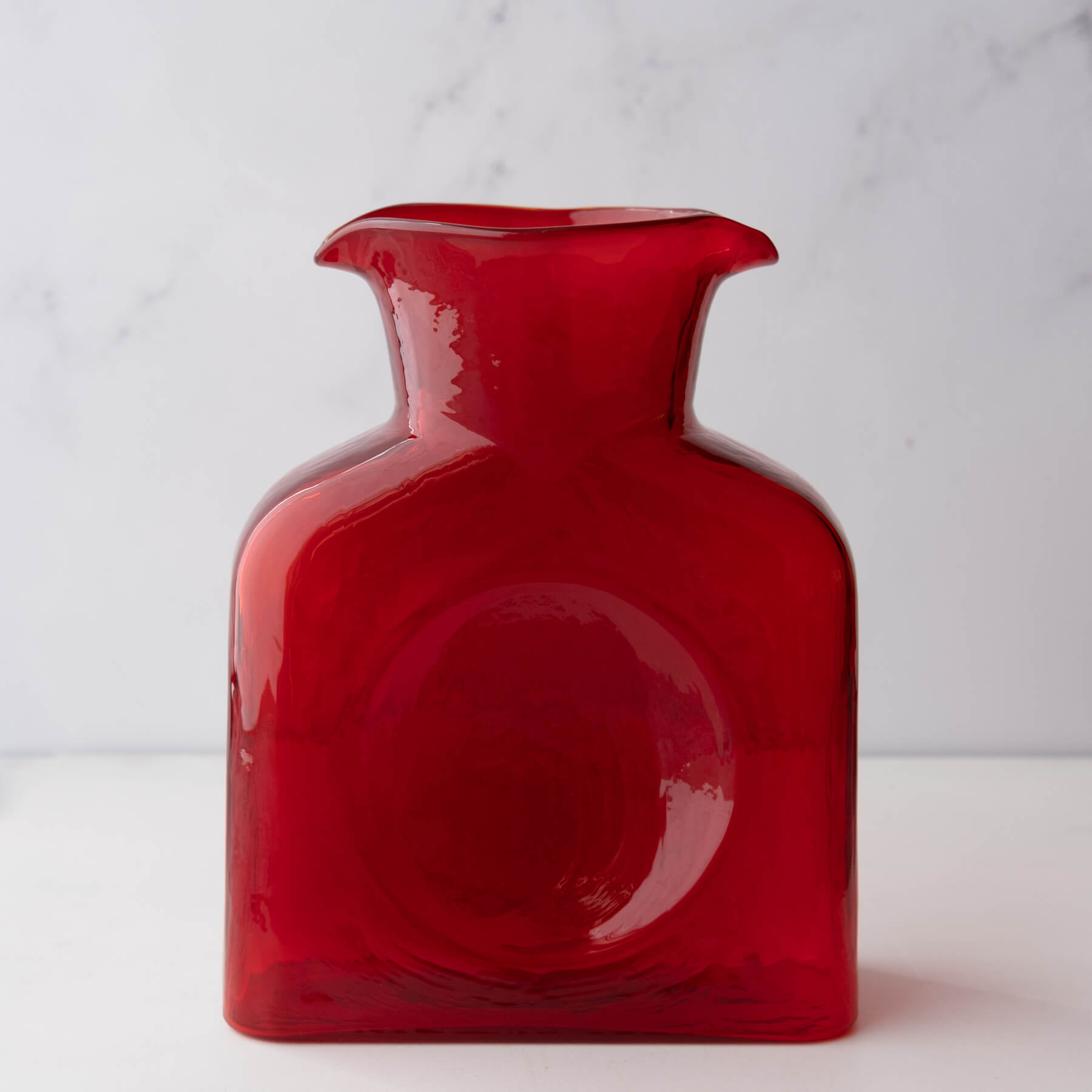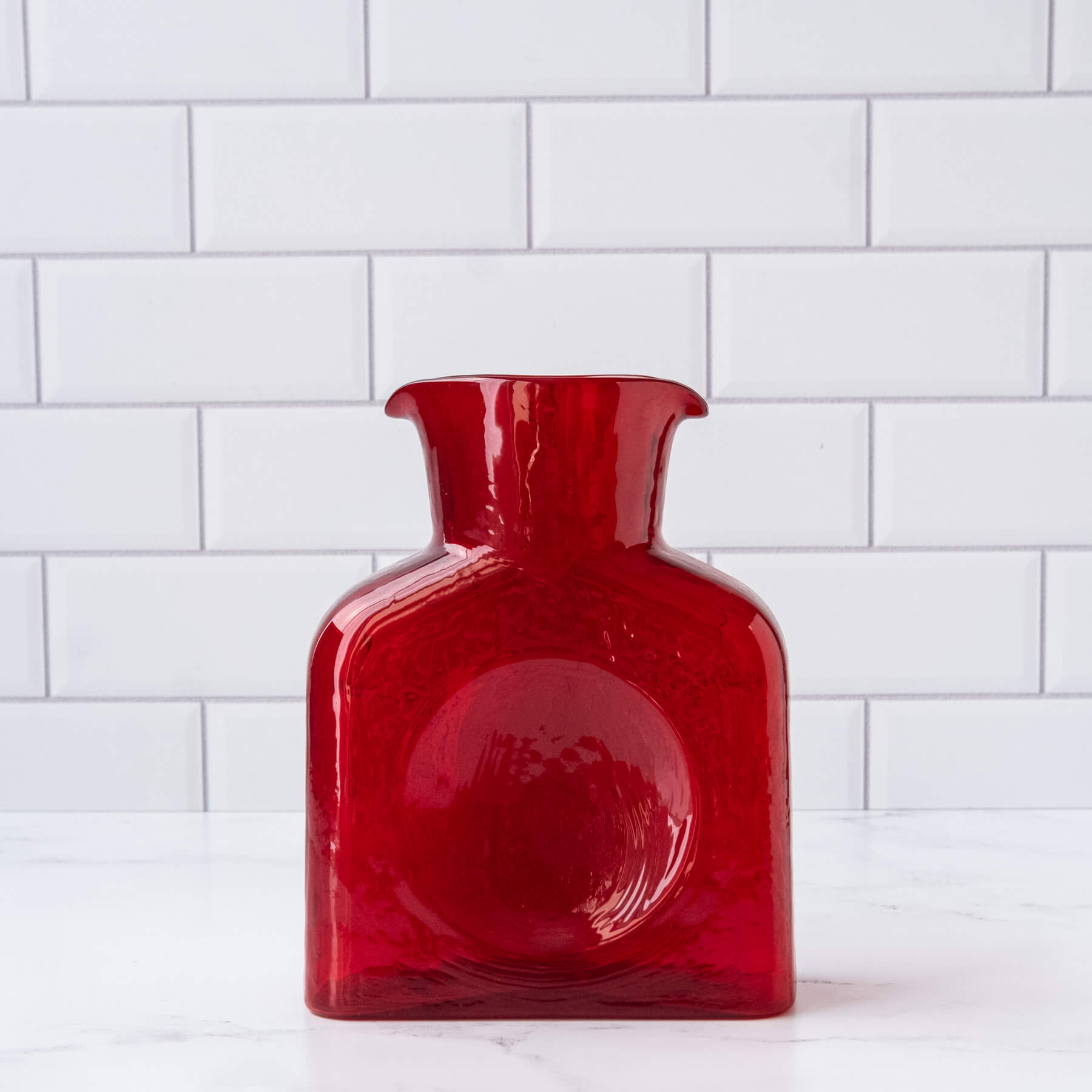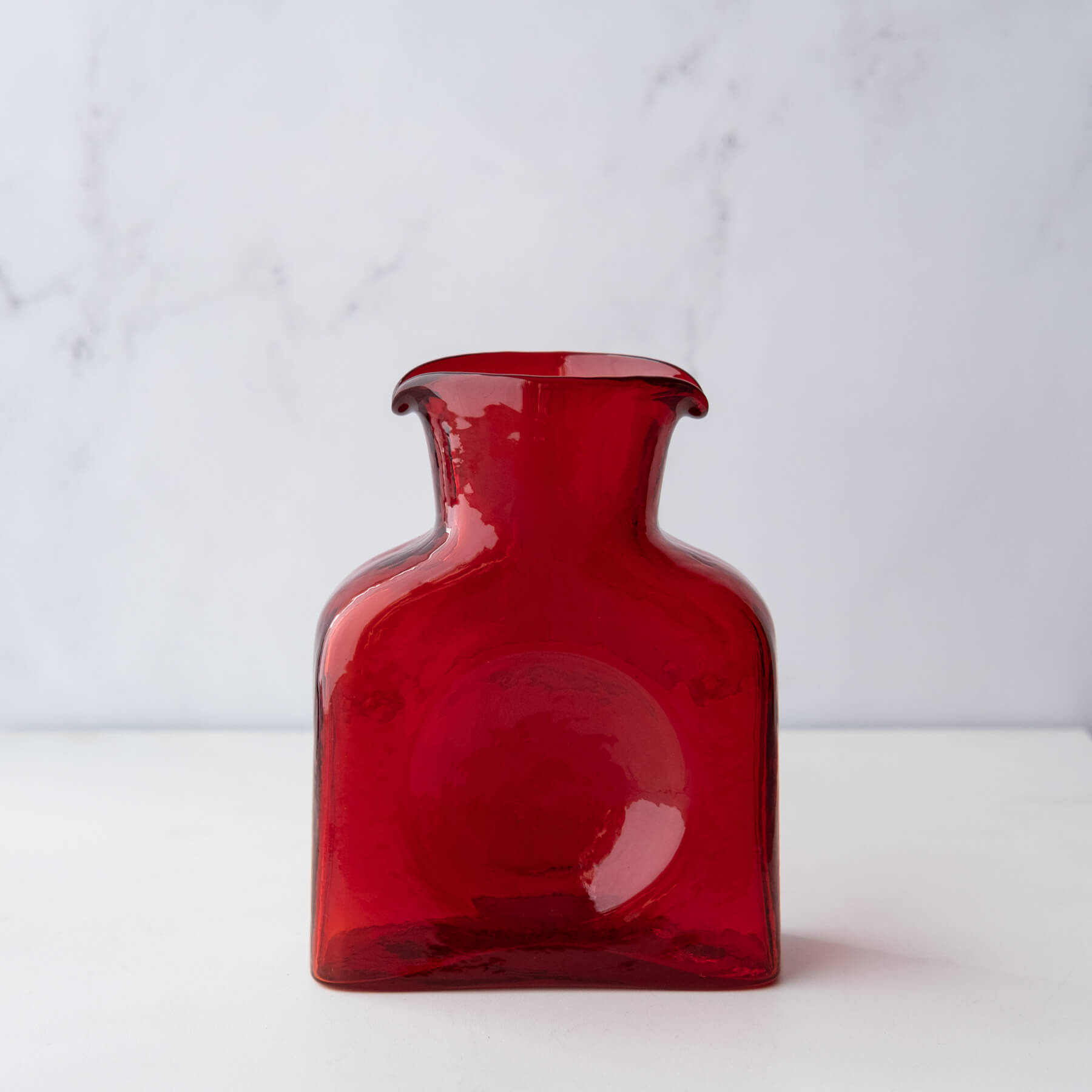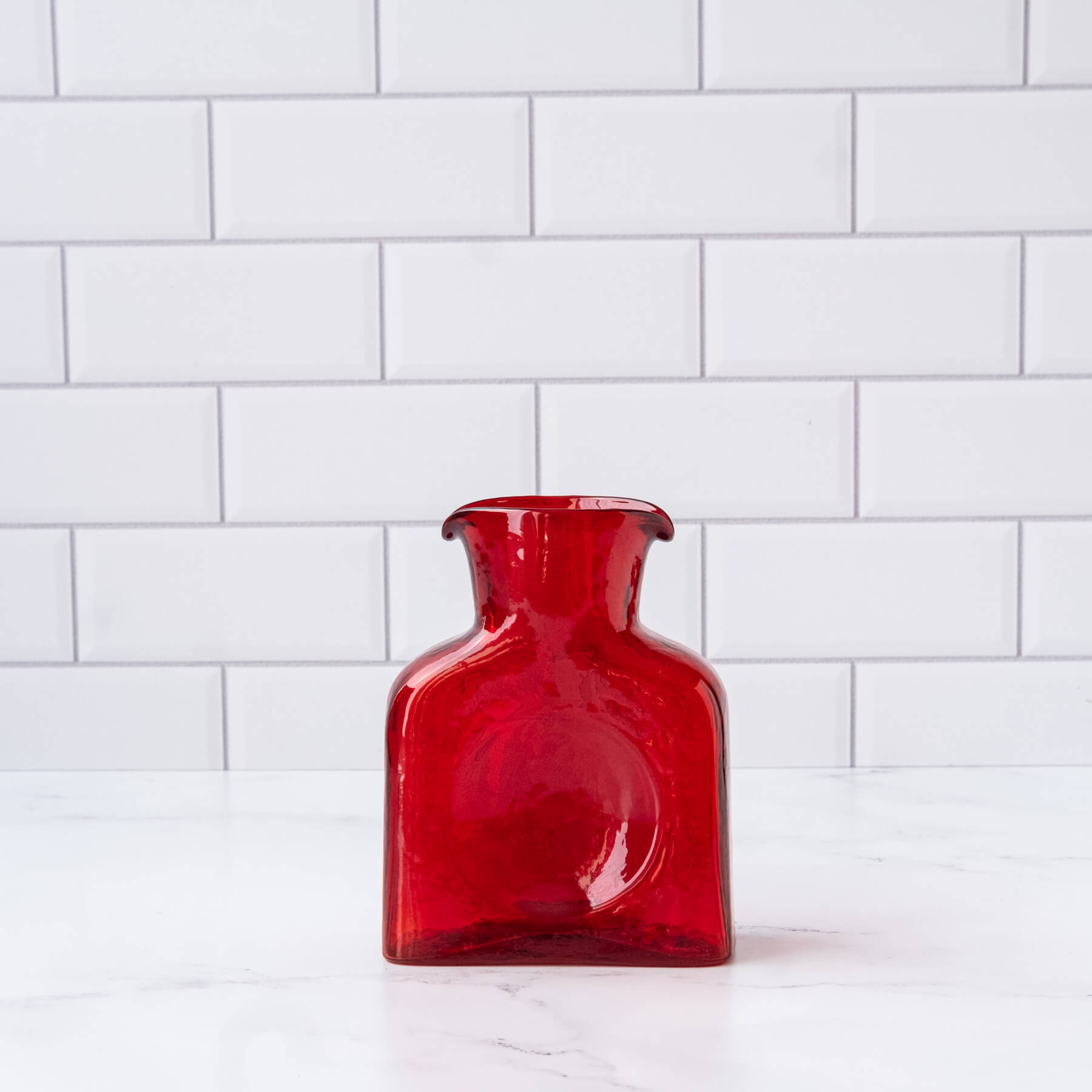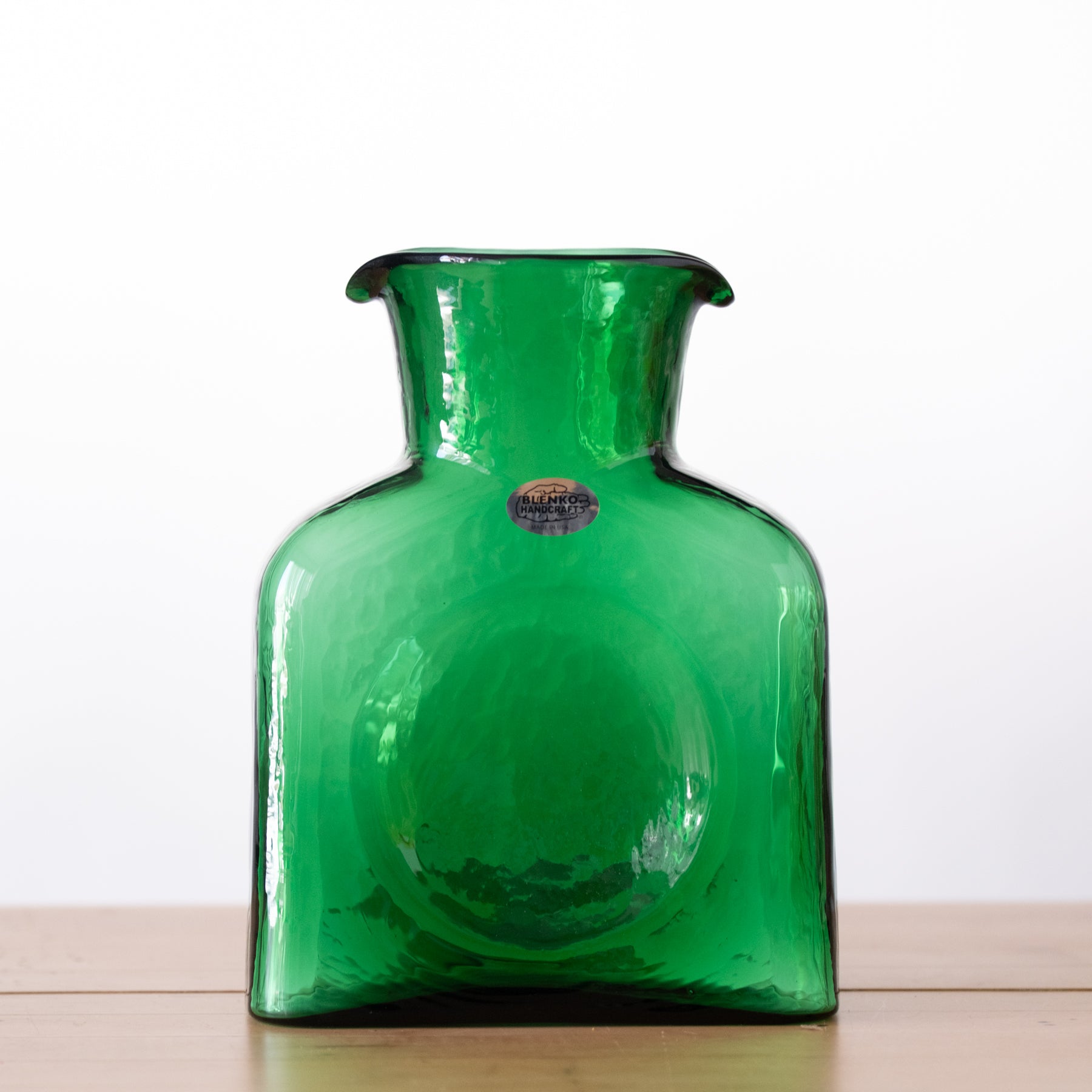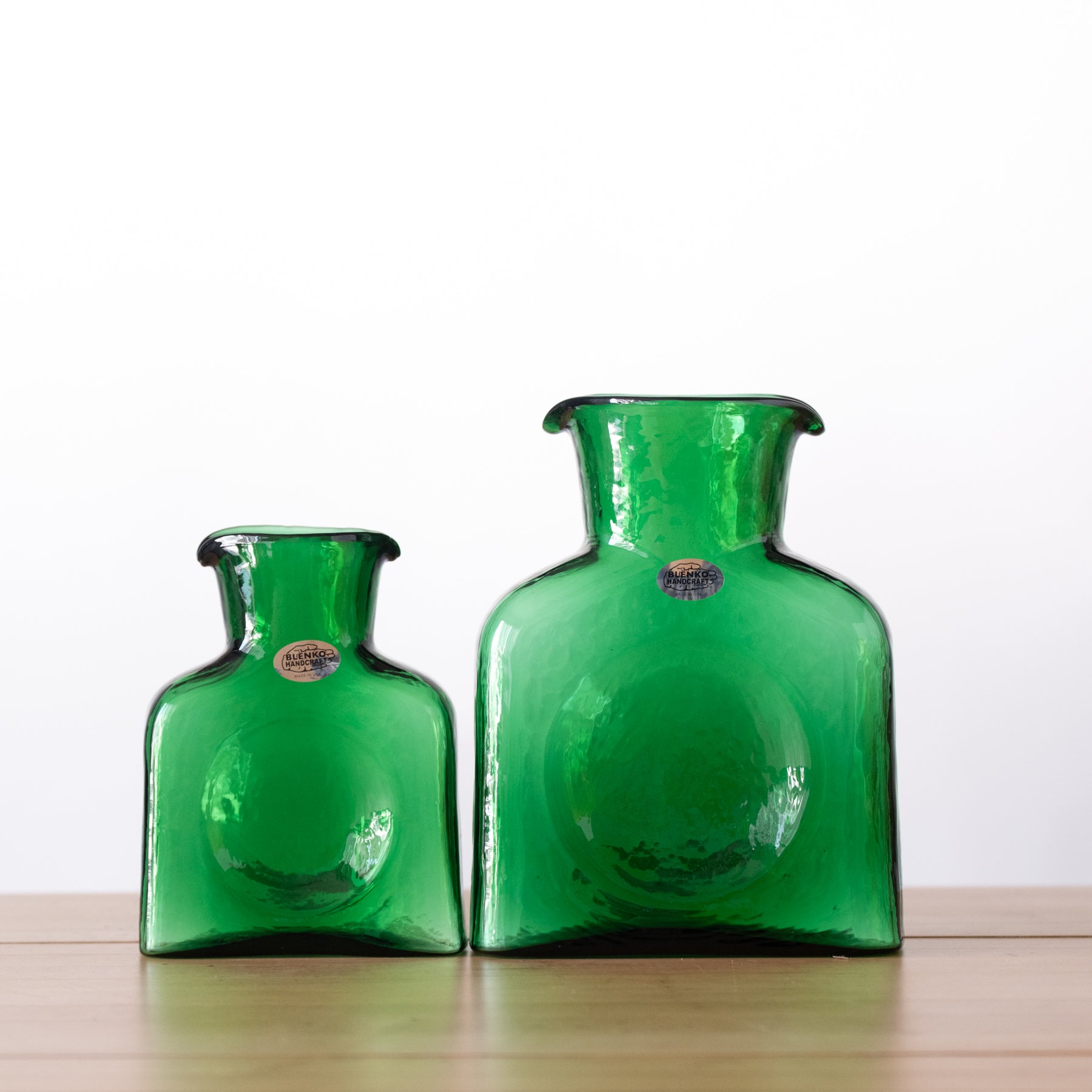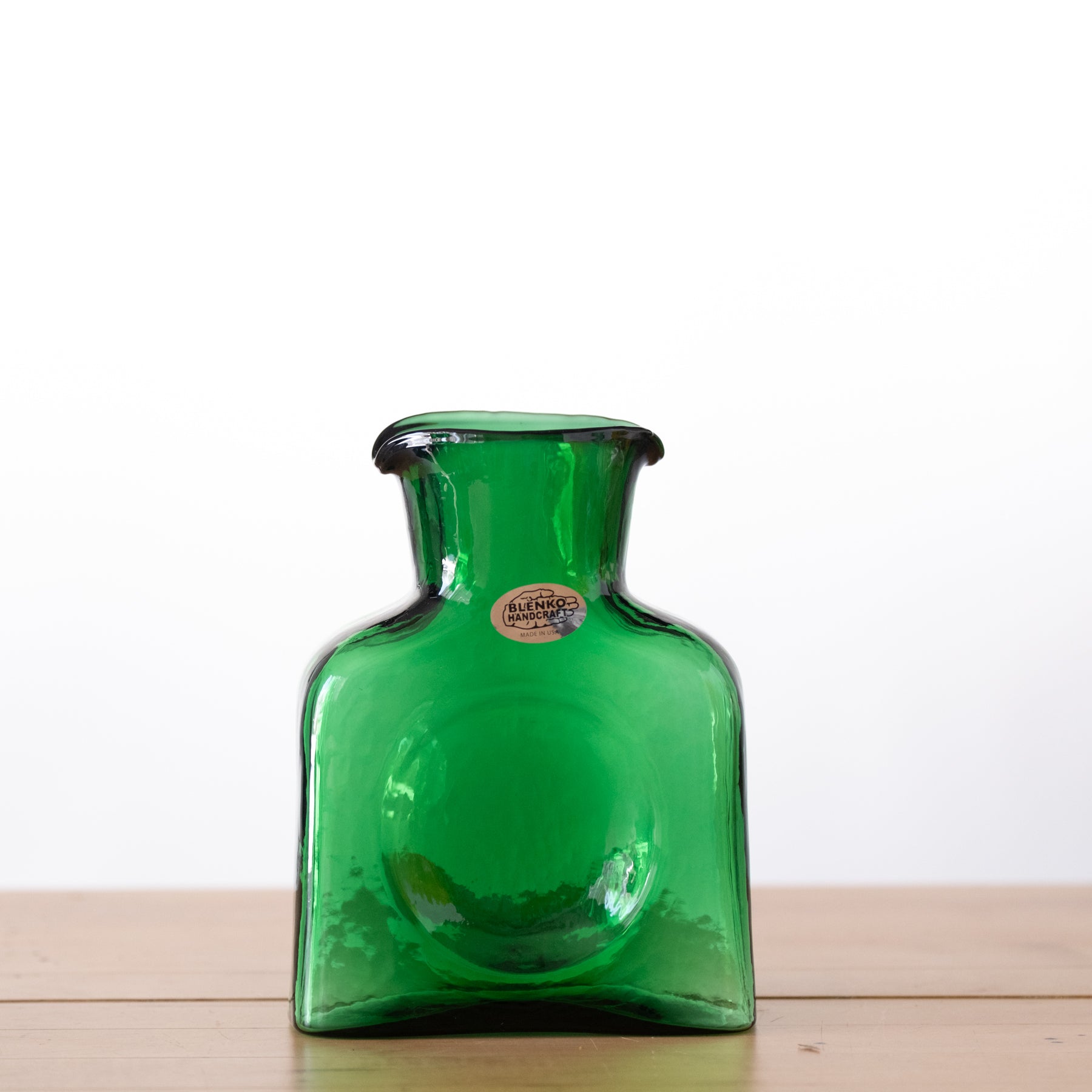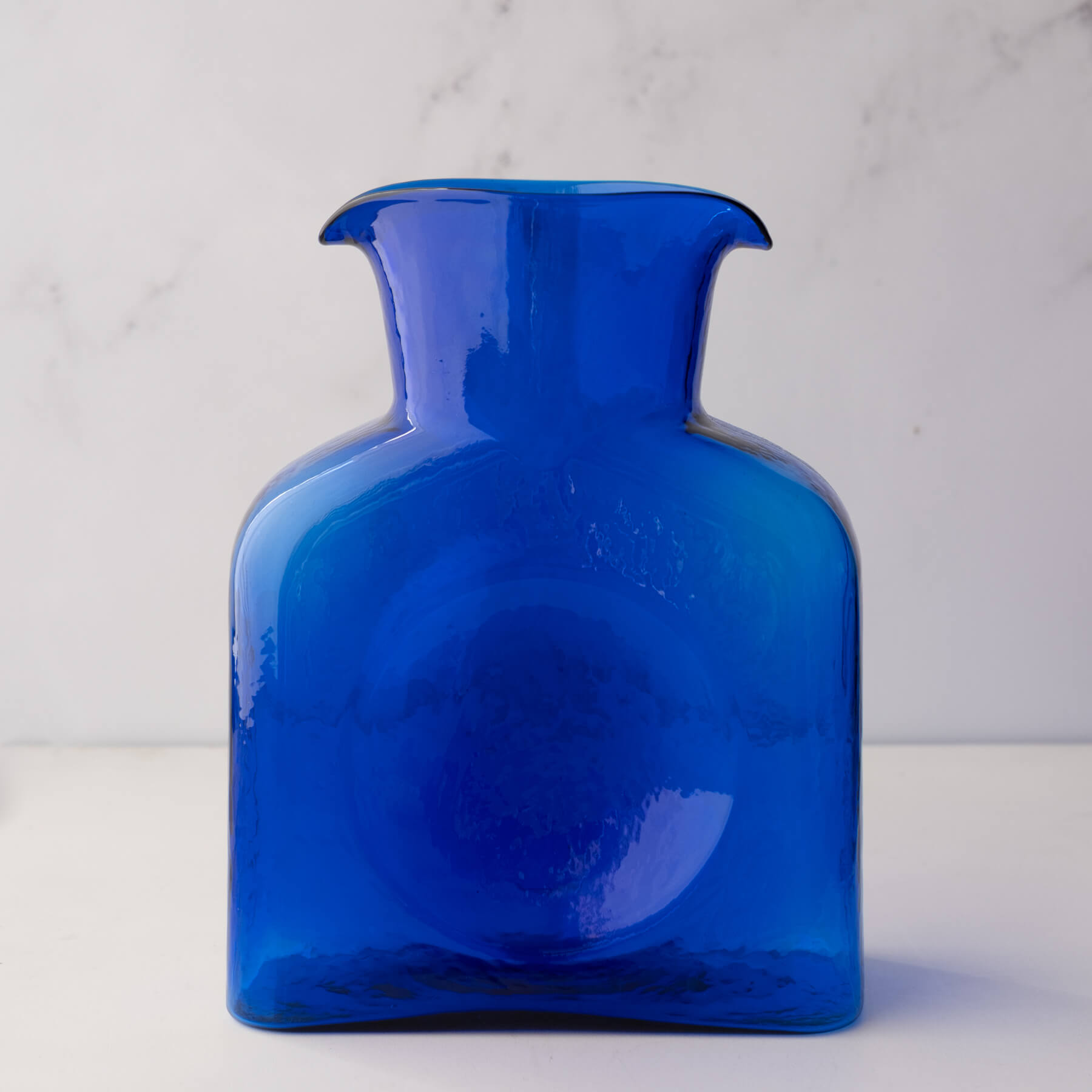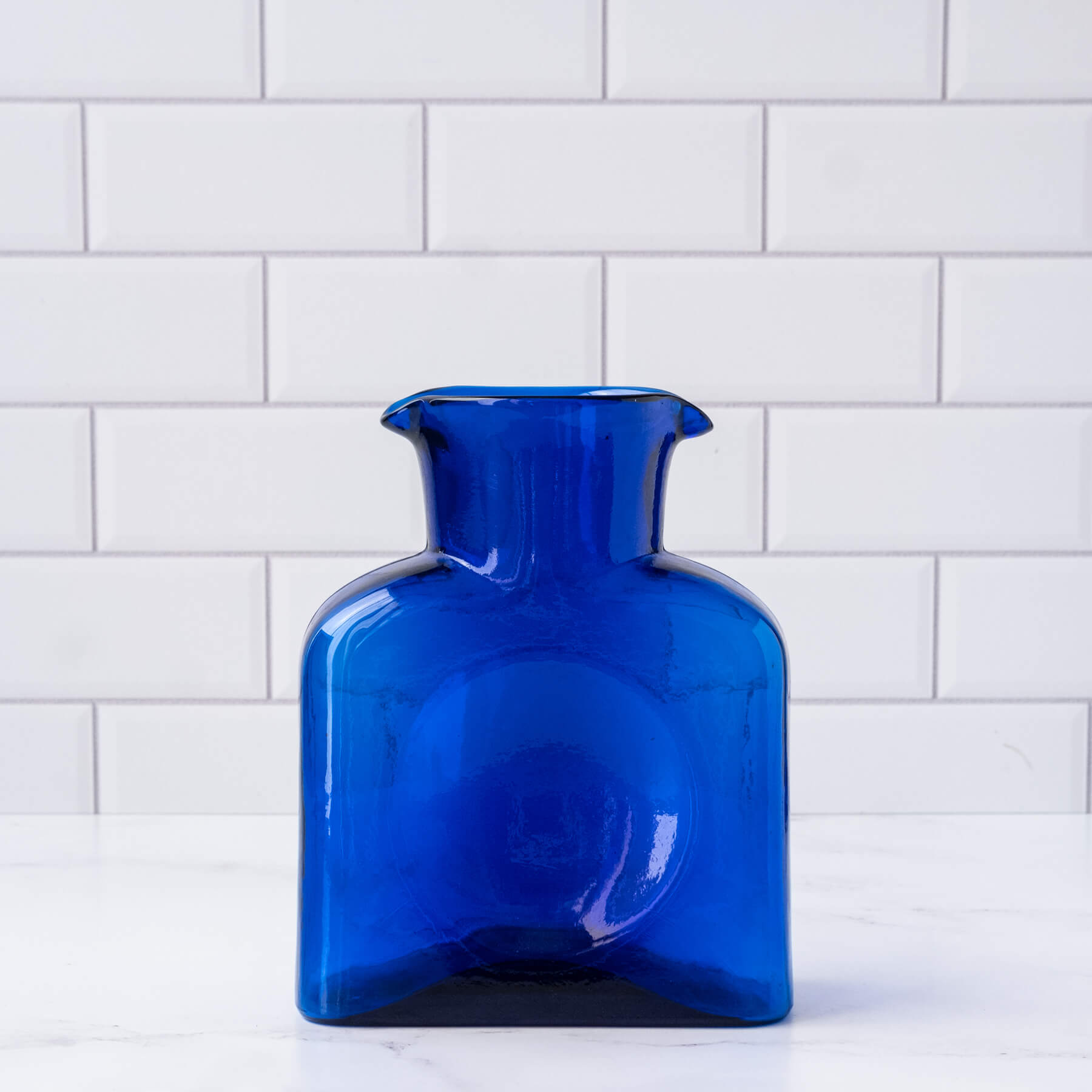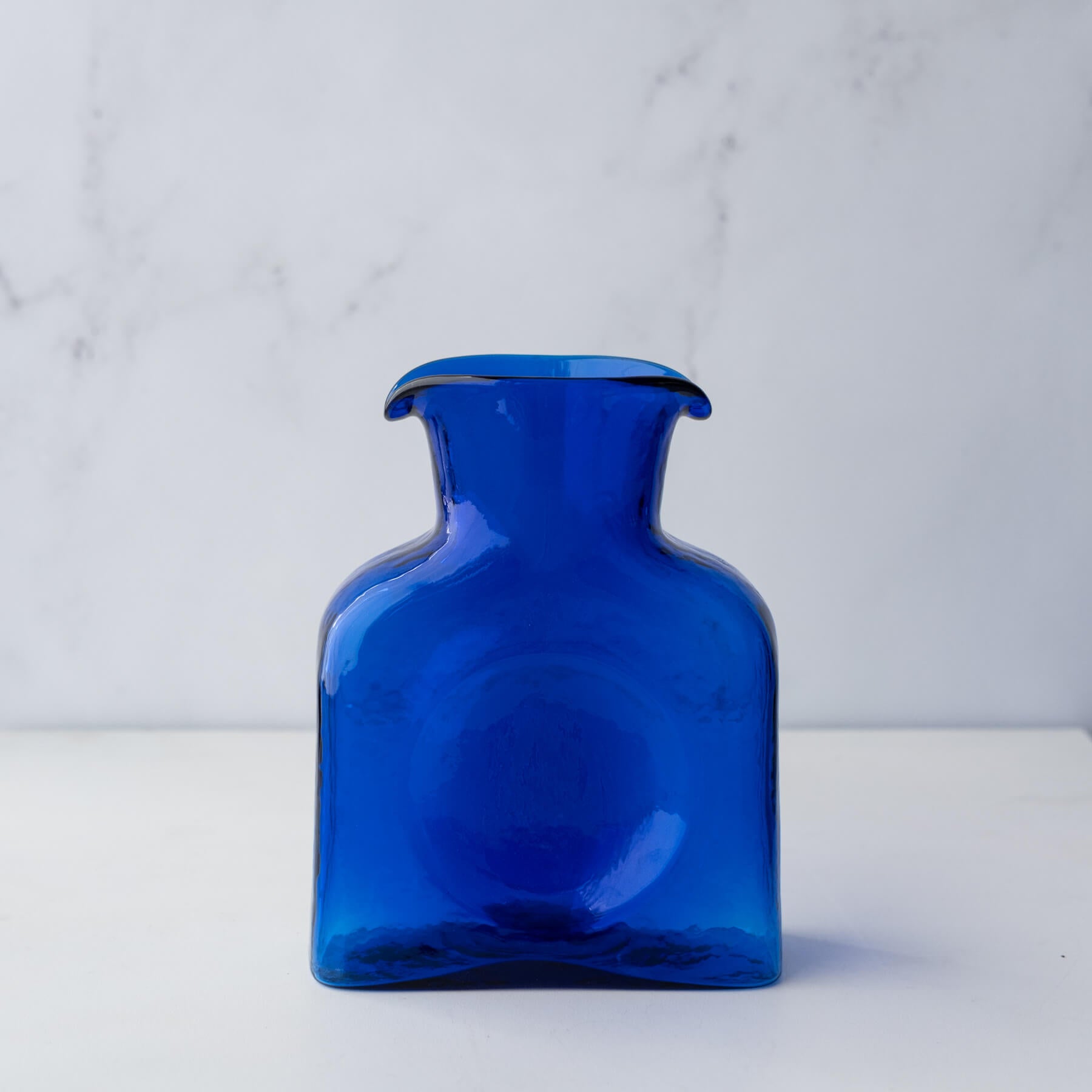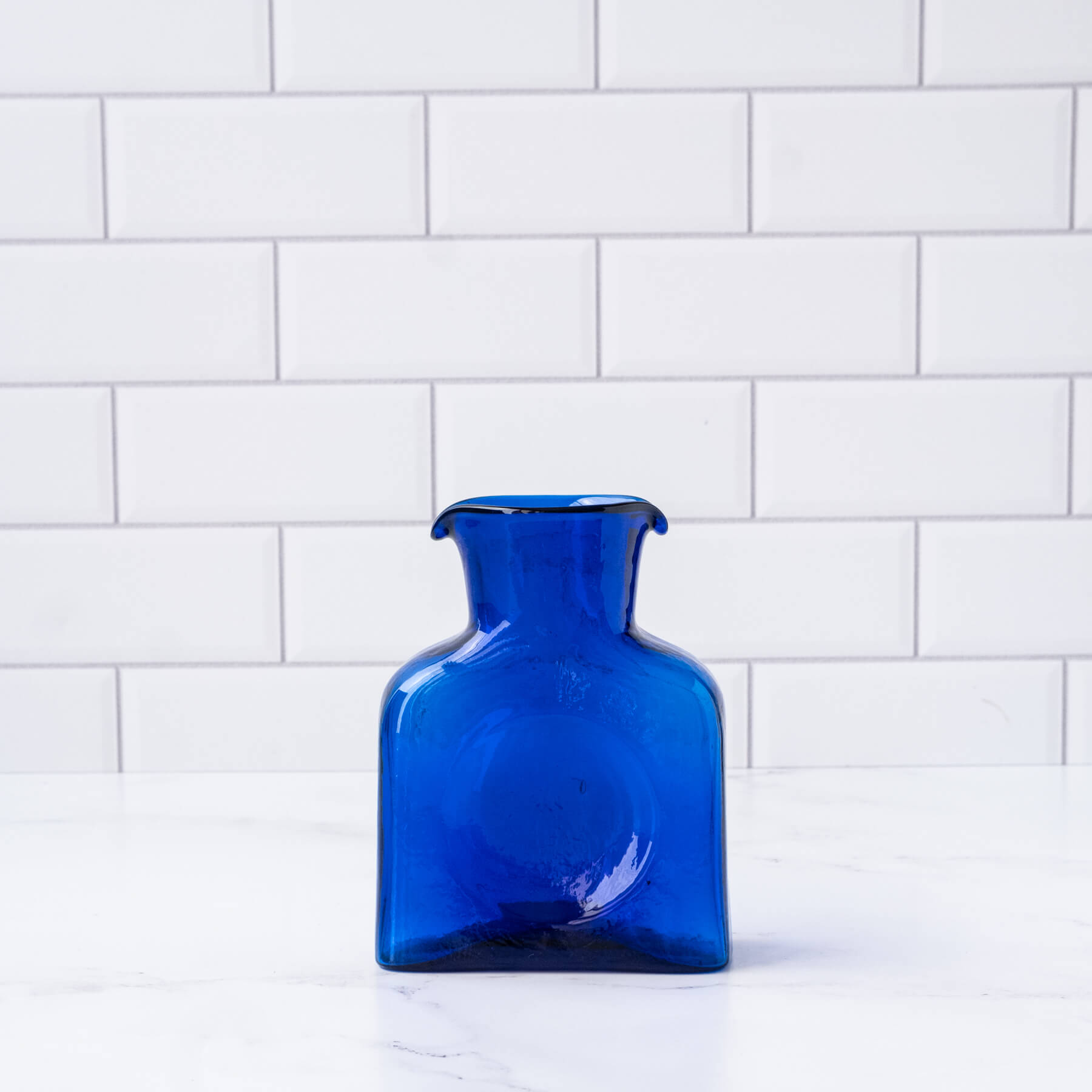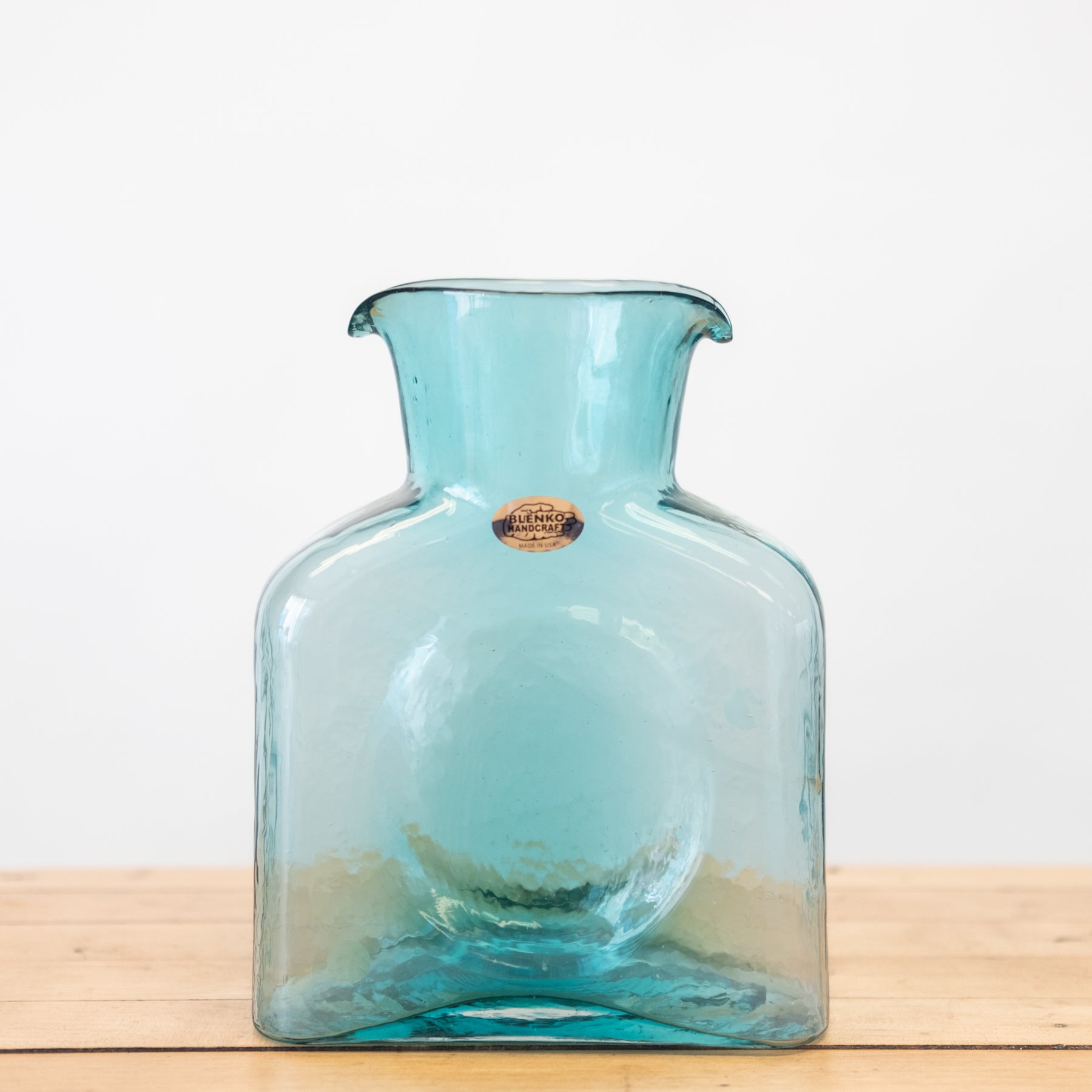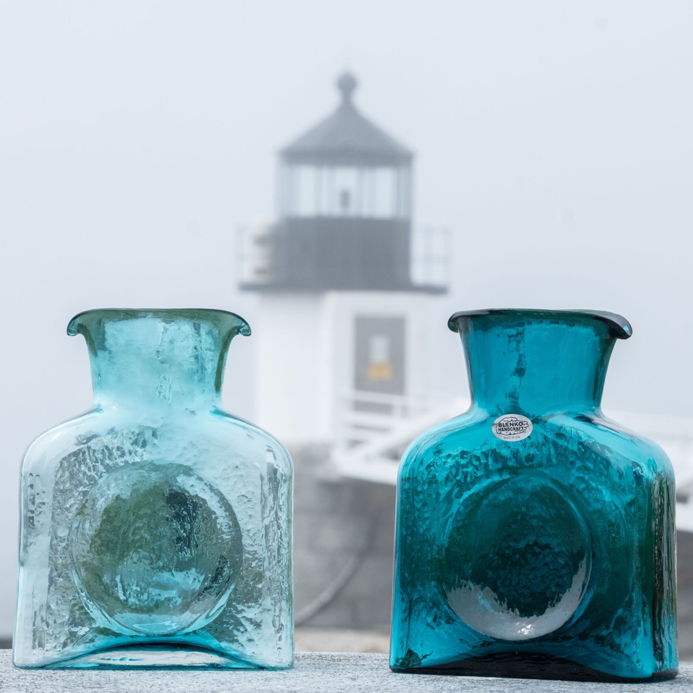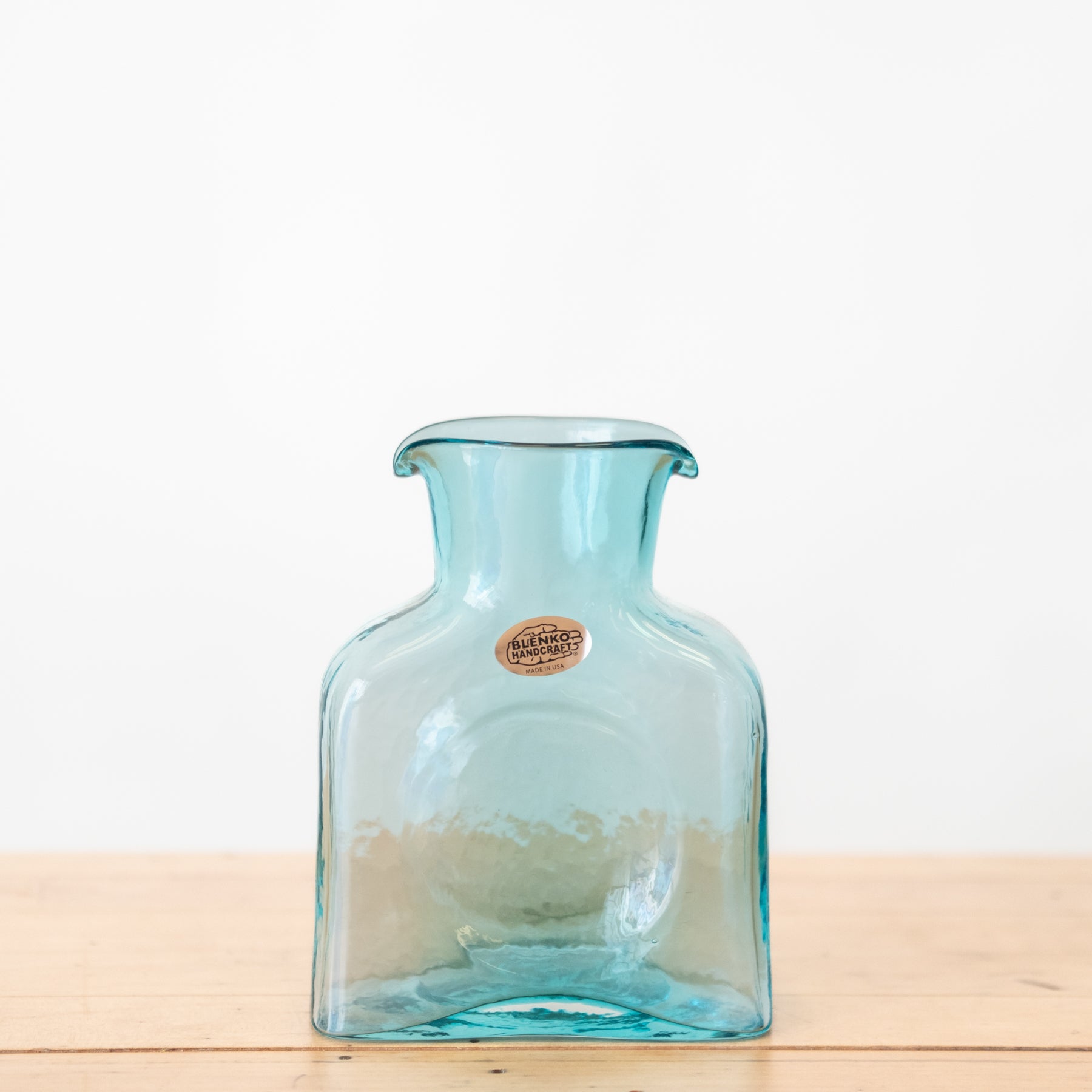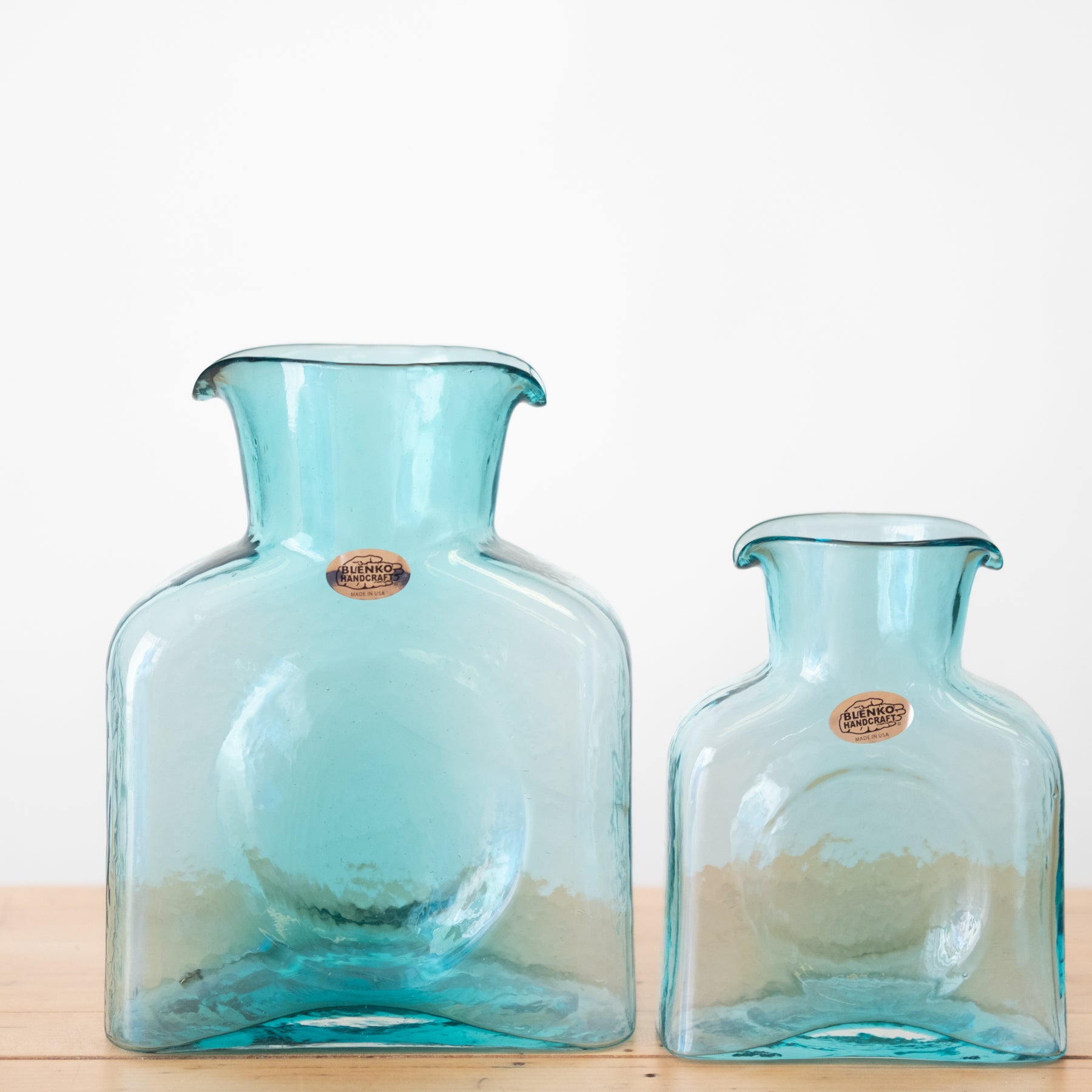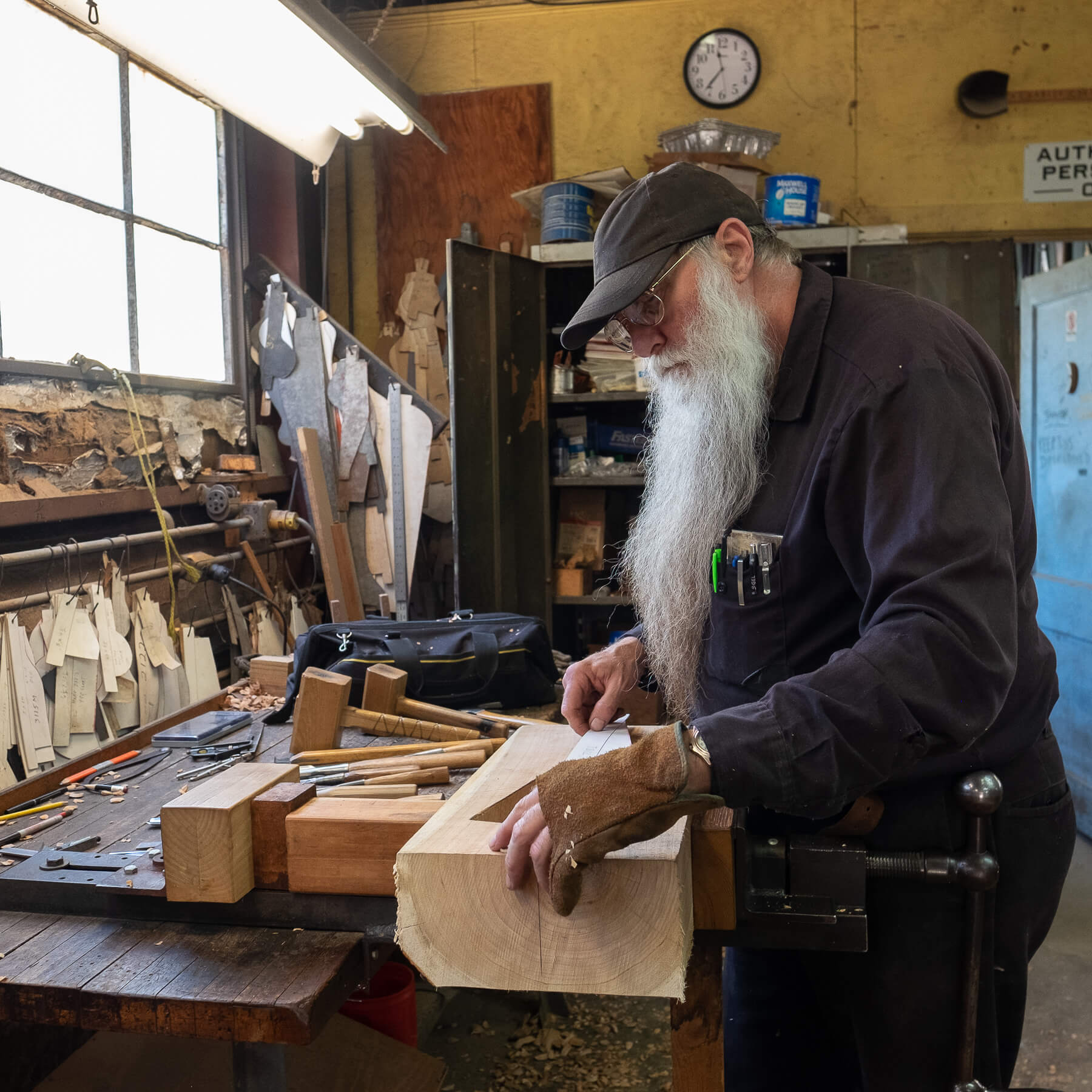
MOULD STUFF - MOULDS, MOULDS, MOULDS!
We use all kinds of materials to make our moulds, but primarily we use good cherrywood. (Cherry fruit trees are not the same, either!) Cherrywood is an especially hard wood, and the hardness allows the wood to soak in and retain more moisture than most other woods. This is important because we need to soak the wood moulds while not in use!
Why do we soak our cherrywood? For a couple of reasons – if we let our moulds dry, then the wood would split, and ruin the form or shape of the moulded ware. We use them wet because if we didn’t, the hot glass would touch the wood and burn it. By using them wet, the hot glass actually creates a pocket of steam inside the mould that mostly keeps the molten glass off of the surface of the wood. For turn moulds (more below!), this is critical, and the centrifugal spin of the pipe in the blower’s hands keeps the carved interior of the mould free from rubbing against the wood and making asymmetries in the design.
How many uses can we get out of each mould? It depends on the type of mould! For a turn mould – a symmetrical mould where the blower turns the hot glass inside to create and capture a perfectly rounded, symmetrical form – we get more uses than we do from a non-turning mould. Turn moulds can ride the steam inside the mould, but non-turning moulds allow the glass to press up against the side, burning away fine details and tight curves faster.
We also use all manner of metal moulds. Metal moulds have a longer shelf life – indeed, most iron or steel moulds can be used indefinitely, assuming no damage and we keep them relatively free of rust. Metals of all kinds have been used over the years, but it is probably no surprise that iron and steel are our best bets for durability and thickness. Making metal moulds is a dying art, though – there are so few industrial glass manufacturers left that there just isn’t a large market for metal mould making.
Our most popular ware – the 384 Water Bottle – has a specially-constructed, specially-designed heavy iron mould, because we use it so often, every single day. Because the Water Bottle isn’t perfectly round/symmetrical, if we used a wooden mould for this product, it would burn out quickly, and frequently. We need a thick, durable mould for these purposes, and it’s the thickness of the steel of these moulds that give our water bottles their characteristic ‘orange peel’ texture.
Metal moulds are ideal for things that wooden moulds are not great for – specifically, imparting fine texture and surface-level work to the glass. Our popular 1960s Strata moulds, for instance, impart fine horizontal, textured lines to the glass – and is still as sharp as it was when we first commissioned the mould. Metal moulds can also take all kinds of whimsical forms – like the sharp steel geometries of our Game Night pieces, or the iron-rebar-cage moulds that Hank Adams was known for.
Graphite moulds are used more and more often in the 21st century. Graphite can be finely carved to create texture and detail, and are also indefinitely durable, although graphite moulds are more fragile than metal moulds, in the main. (We can’t just sling our graphite moulds about!) For instance, our brand new 384M Moon mould was a custom graphite mould made for us – so that we could impart the detailed topography and cratered texture of the actual moon to the exterior of our water bottle!
But blow moulds aren’t the only kinds of moulds we use. We also have ‘spin moulds’ – these bowl moulds are large metal honkers we affix to our spin machines, and we ladle hot glass into them and let the centrifugal force spread the glass around and up the sides of the mould. We also use ‘dump moulds,’ small handheld metal or graphite moulds that we gather hot glass into. The glass pools and spreads to fill the mould before we turn it out and put it in the lehr. And of course, our detailed suncatchers are the product of carefully carved graphite pucks on the end of handles. We cut a small quantity of glass onto a graphite plate; gravity encourages it to spread; and we press down with the graphite puck to impress the fine details on the circle of the glass.
And finally, the elephant in the room: Moulds? Or Molds? We use the British spelling of the word because our founding family brought over their British glassworking legacy and knowledge when they moved here to start our company. Moulds! (jazz hands)


